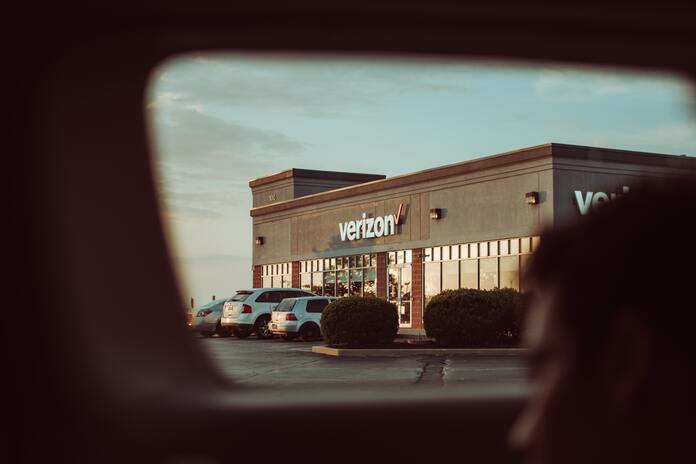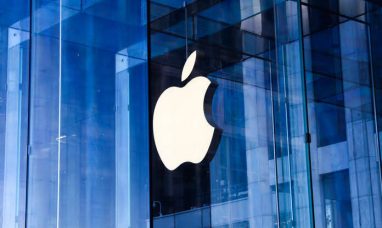Verizon Stock (NYSE:VZ)
Telecommunications firms are frequently regarded as steady or secure investments. These firms benefit from an oligopoly with potentially less elastic demand. Even in difficult economic times, practically every consumer and business requires a wireless connection. As a result, investors in this business have tolerated large debt loads and poor development. However, in my opinion, Verizon (NYSE:VZ) is getting less appealing. Not only has the company been losing users in recent quarters, but it is also much more leveraged than its competitors, T-Mobile (NYSE:TMUS) and AT&T (NYSE:T). This puts the corporation in a difficult situation. Verizon must do more to address the current issue of customer churn, which includes lowering service pricing, investing more in 5G infrastructure, and including more perks in its plans. With dwindling subscriber numbers and a large debt burden, all possible remedies could be disastrous to Verizon. As a result, I feel Verizon is a sell.
Customers Departing
Verizon lost consumer wireless retail and postpaid customers in 2022, excluding the fourth quarter. The company lost 263 thousand clients in the most recent quarter, 2023Q1, continuing a trend that continued throughout 2022 when the company lost a total of 655 thousand consumers. The company’s unfavorable trend is not showing signs of abating.
Furthermore, Verizon does not fare well with prepaid subscriber numbers. The company lost 351 thousand clients in 2023Q1 after losing a total of 445 thousand consumers, as shown in the graph. Even though prepaid users are more likely to leave than postpaid customers, the figures demonstrate a clear trend: Verizon’s customers are departing.
T-Mobile, on the other hand, reported 583 thousand postpaid phone net customer gains in 2023Q1, while AT&T also reported strong growth with 424 thousand postpaid phone net additions in 2023Q1. Unlike Verizon, these results follow strong customer additions in 2022.
As a result, the recent earnings report trend shows that Verizon is losing consumers at an alarming rate to AT&T and T-Mobile, and this trend does not appear to be changing anytime soon.
Consequences
I believe Verizon’s current downward trend derives from a fundamental issue. In comparison to AT&T and T-Mobile, Verizon’s services are overly pricey while providing little value to customers. Price and speed are frequently the most critical variables evaluated by consumers when selecting a wireless service. To remain relevant, a competitive advantage in either pricing, service, or both is required.
When the pricing of all three carriers is compared, a family of four will have to pay $160 plus other taxes and fees for AT&T’s mid-tier unlimited plans. The same family will have to spend $155 for T-Mobile, which includes numerous taxes and fees. Finally, the same family will have to pay $180 plus additional taxes and fees to Verizon. Although T-Mobile’s plan includes taxes and fees, even when this is taken into account, Verizon is 12.5% and 16.3% more expensive than AT&T and T-Mobile, respectively. Verizon is 10% and 27% more expensive than AT&T and T-Mobile for a family of three, respectively.
In general, Verizon charges a higher price to its consumers than AT&T and T-Mobile. However, Verizon is having difficulty justifying this price structure because the company’s 5G service is considered inferior to that of AT&T and T-Mobile. First, Verizon is substantially behind in terms of 5G availability. While T-Mobile has 49.7% coverage and AT&T has 20.5%, Verizon has only 8.8% coverage. T-Mobile was by far the fastest of the three in terms of download speed, with 79.5 Mbps, while AT&T scored 38.2 Mbps higher than Verizon’s 31.3 Mbps. When it comes to pure download speed, Verizon beats AT&T by 84.9 Mbps to 71.1 Mbps. This amount, however, is still lower than AT&T’s 186.3 Mbps. Verizon may be superior in some areas of the United States; nevertheless, Verizon lags behind its competitors for the bulk of consumers, particularly in urban areas with 5G infrastructure.
As a result, while Verizon charges a premium to its customers, the company’s 5G offering is incredibly inadequate in comparison to its competitors, and I believe this is the reason for Verizon’s ongoing customer churn.
Possible Resolution
Verizon invested approximately $6 billion in CapEx, with a “step down in overall CapEx pacing throughout the remainder of the year.” Although this comes as C-band-related spending is winding down, the management team emphasized on the results call that the company has no plans to increase spending to justify the present high pricing Verizon demands from its customers. As a result, I believe Verizon has three options.
The first possible conclusion is the most straightforward way to issue a solution. Verizon can lower its prices to become more competitive. Second, the corporation can boost the benefits and incentives of its data plans. Verizon already provides free Disney Plus (NYSE:DIS) or Apple (NASDAQ:AAPL) Arcade subscriptions with some of its plans. Verizon might raise the benefits to make the company’s services more appealing. Finally, Verizon can raise capital expenditures to provide better 5G services in order to justify its premium price in comparison to competitors. Unfortunately, due to Verizon’s financial situation, any of these ideas will almost certainly be detrimental to the corporation.
Financials
Verizon bears two significant burdens: debt and dividends. Starting with debt, the corporation has $140 billion in long-term debt, with $12 billion expiring within a year, bringing total interest expenses for the quarter to $1.2 billion, or nearly 25% of net income. Furthermore, as shown in the table below, Verizon has the largest debt-to-equity ratio among its competitors.
Furthermore, as shown in the figure above, Verizon has a dividend payout ratio of around 50%. This is a sustainable and healthy level for the company. However, given the likelihood of the corporation cutting pricing or even increasing CapEx to reverse the current poor trend, Verizon’s annual dividend hikes and hefty dividend payout could be a burden.
Overall, because Verizon is a telecommunications company, having a dividend and debt burden is manageable because the cash flow outlook is very stable; however, with a fundamental risk of losing customers requiring the company to likely increase spending to upend this trend, I believe there will be a negative impact on investor sentiment and the stock price as margins could be squeezed.
Summary
Verizon operates in an industry where a dividend and financial burden are widely accepted by investors; however, given that Verizon is facing a fundamental problem of customers leaving the company for competitors, the pressure seen in Verizon’s operations may be more than investors can tolerate, potentially causing further damage to the company’s stock price performance. In my opinion, the ongoing trend of subscribers departing suggests that consumers are no longer willing to pay a premium for Verizon, which means two things. One, Verizon may have to pay more than planned for a 5G network. Two, Verizon may have to offer similar benefits to T-Mobile. Three, reduce expenses. As a result, with the company’s financial and dividend load not allowing for substantial capital investments for a turnaround, I believe Verizon is a sell.
Featured Image: Unsplash @ José Matute

















